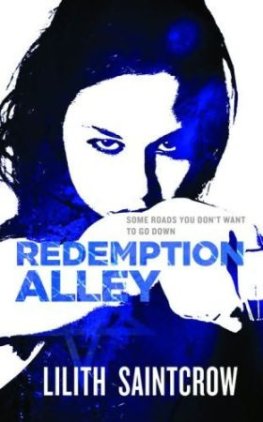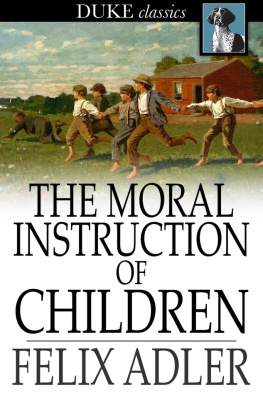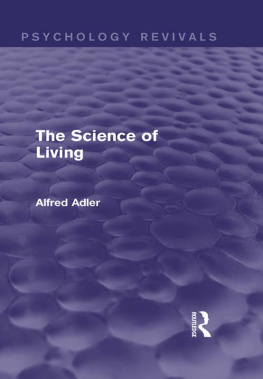Beyond the Dead-End Alley of Mass Education
Beyond the Dead-End Alley of Mass Education
Chaim Adler and Rita Server
First published 1994 by Westview Press, Inc.
Published 2018 by Routledge
52 Vanderbilt Avenue, New York, NY 10017
2 Park Square, Milton Park, Abingdon, Oxon OX14 4RN
Routledge is an imprint of the Taylor & Francis Group, an informa business
Copyrigh 1994 Taylor & Francis
All rights reserved. No part of this book may be reprinted or reproduced or utilised in any form or by any electronic, mechanical, or other means, now known or hereafter invented, including photocopying and recording, or in any information storage or retrieval system, without permission in writing from the publishers.
Notice:
Product or corporate names may be trademarks or registered trademarks, and are used only for identification and explanation without intent to infringe.
A CIP catalog record for this book is available from the Library of Congress.
ISBN 978-0-813-31778-6
ISBN 13: 978-0-367-00770-6 (hbk)
This book is the result of research and development over almost an entire generation in a realm of education that is still waiting for a breakthrough. In the last decade we have witnessed, throughout the Western world, a rising concern for "excellence," and a growing commitment to secure at least a minimum level of achievement among all students in any given nation, within the framework of public mass education. Ideologies of "equal educational opportunities" and "closing the gaps" have given way to an ideology of "effectiveness." Yet, while educational systems have indeed achieved considerable effectiveness with the higher-achieving echelon of their student body, almost to the point of a "ceiling effect," they have been far less effective in coping with very heterogeneous student bodies, which include young people from various marginal sectors of society.
The onus today is on the educational system at large, and particularly on schools, principals and teachers. In light of the growing support for parental choice of educational frameworks, the very survival of many schools may come to depend on their effectiveness, especially those schools which admit students who were rejected by more selective schools. Unequipped for dealing with considerable parts of their student body, the educational system thus finds itself at a dead end. Here is where a breakthrough is vital; this is the realm of education with which this book deals: getting beyond the dead end of mass education.
In exploring this issue, we focus on the Israeli context. This choice was made for two main reasons, one personal and the other sociological. Firstly, Israel has been the arena of our work. Indeed, the senior author has had the privilege of serving for many years as Director of The NCJW Research Institute for Innovation in Education, in Jerusalem, Israel. The main purpose of this institute has been the study of educational inequalities and the provision of educational opportunities for young people of socially marginal backgrounds. Secondly, and more importantly, Israel constitutes an ideal laboratory. It is a small society, with a highly heterogeneous population, deeply committed to equality and social justice, and placing a high, almost naive, hope on public mass education.
offers a typology of EFO strategies.
delineates possible directions for breaking through the dead end.
Cham Adler
Rita Sever
We wish to express our deepest thanks and appreciation to some of the people without whose assistance the writing of this book would not have been possible. First, we thank all members of the staff of the NCJW Research Institute for Innovation in Education at the School of Education of the Hebrew University, Jerusalem, within which our project was implemented. The help of Lorraine Gastwirt, the former assistant director of the Institute; Ayala Berkovitch, the present assistant director; Nava Zilberstein, the institute coordinator and financial officer; and Chaya Buckwold, the very efficient and most helpful typist, need to be especially singled out.
We were assisted by a few colleagues, during different stages of our work. Especially we wish to acknowledge the kind help and the contributions of Thelma Gottlieb and Chana Levin.
We were very fortunate in that the manuscript was read and critiqued by a number of colleagues, whose wise and insightful remarks were considered by us and taken into serious consideration when the manuscript was rewritten. Especially we wish to thank Jim Coleman, Schmuel Eisenstadt, Michael Inbar, Lea Shamgar-Handelman, Elizabeth Cohen, Henry Levin, Rachel Lotan and Lee Shulman for their critique and suggestions. The last four, of Stanford University, offered us their kind advice during a summer spent at the Stanford School of Education.
Last, but not least, we wish to express our thanks and appreciation to our editor, Helene Hogri, who not only suggested important linguistic changes, but asked us at times most difficult questions about the text per se and led us thus to rethink and rewrite quite a few sections of the book.
The responsibility for the entire text, the ideas and formulations, rests, of course, solely with us. We do thank all the above-mentioned who helped us to bring this project to fruition.
C.A.
R.S.
1
Ethnicity and Inequality
Most modern democratic societies are sensitive to social inequalities that correlate with ascriptive group characteristics and persist over years. Such inequalities deeply contradict their basic value systems, and they create the potential for unrest and discontent. Education tends to be singled out as one of the main remedies for such a state of affairs. The issue, however, is not only whether and under what conditions education can contribute to the bridging of gaps. It is first and foremost the understanding of the underlying causes of the gaps, so as to apply appropriate mechanisms for coping. We intend to analyze how the process and institution of education can be harnessed in the service of closing the gaps.
Major attempts to cope with social gaps began after World War II, mainly with respect to racial and/or ethnic differences. Mass education was one of the first concrete approaches to the problem. However, the naive belief that merely opening up education to the masses would resolve social differences proved to be unfounded: mass education led to gaps in terms of educational achievements, which perpetuated the social gaps.
In an attempt to deal with this dilemma, a wealth of theoretical educational approaches have evolved, many of which have led to specific educational policies and programs. The great majority of these theories and practices have couched the problem in ethnic terms. Yet, despite these efforts, gaps in educational achievements endure. It appears as if mass education is at a dead end.
The present chapter describes the major educational approaches that have developed over the years, as well as specific educational policies which derived from them. This is followed by the presentation of our own multidimensional approach, which shifts the focus away from ethnicity in an attempt to break through the dead end.















